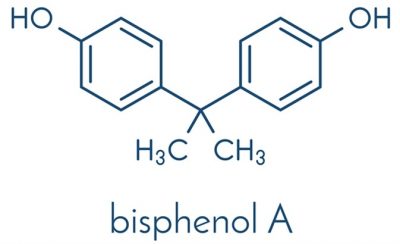Bisphenol A – toxic chemical 12/05/2019 – Posted in: Daily News
Bisphenol A
For: Preliminary & Mains
Topics Covered: BPA, associated health issues, BIS rules
News Flash
A study conducted by ‘Toxic Link’ found that, traces of banned toxic chemical “Bisphenol A (BPA)” found in some bottles and cups for babies sold in the Indian market.
BPA
- BPA is an endocrine-disrupting chemical.
- It has been accepted as the “chemical of concern” globally.
- Countries have taken action to phase it out from products.
- The toxic chemical is known to mimic a hormone that activates progression of cancer and interferes with development of the reproductive system.
- Epidemiological studies of children indicate correlations between BPA exposure and heart diseases, liver toxicity, and metabolic syndrome (diabetes obesity).
- In India, as per the current Bureau of Indian Standard (BIS) regulations, the use of BPA is prohibited.
- BIS revised the standard for baby feeding bottles in 2015 as per IS 14625:2015, and prohibited the use of BPA in baby feeding bottles.
Background
Earlier the baby feeding bottles and sippy cups were manufactured with polycarbonate in which BPA was the main constituent (BPA is the building block for polycarbonate).
However, after the prohibition of BPA, it is quite surprising that traces of BPA are still being found in the bottles. Similarly, traces of BPA were also detected in the sippy cups.
The polycarbonate-based baby feeding bottles are still available in the Indian market, even though they have been prohibited since 2015 as per BIS.
Polypropylene
Ministry of Women and Child Development had said that the material used for plastic feeding bottles and accessories, excluding teats, shall be of polypropylene conforming to IS 10910 or polyethersulfone (PES) or any other olefin based polymer, co-polyester material or other raw material.
The materials used should not pose any health risk to babies and shall not contain BPA.
Where can BPA Found?
Polycarbonate plastics have many applications including use in some food and drink packaging, e.g., water and infant bottles, compact discs, impact-resistant safety equipment, and medical devices.
How does BPA get into the body?
The primary source of exposure to BPA for most people is through the diet. While air, dust, and water are other possible sources of exposure, BPA in food and beverages accounts for the majority of daily human exposure.
Bureau of Indian Standards
- The Bureau of Indian Standards (BIS) is the national Standards Body of India working under the aegis of Ministry of Consumer Affairs, Food & Public Distribution, Government of India.
- It is established by the Bureau of Indian Standards Act, 1986 which came into effect on 23 December 1986.
Source: Down To Earth
You can follow us on LinkedIn and for more updates related to UPSC IAS Preparation, Like our Facebook Page and subscribe our Diligent IAS Youtube Channel
Also Read Related Daily News
- Zero Pendency Courts Project
- Purple Frog
- Double Asteroid Redirection Test (DART)
- Kalasa-Banduri Project
- Karnataka limits weight of schoolbags

